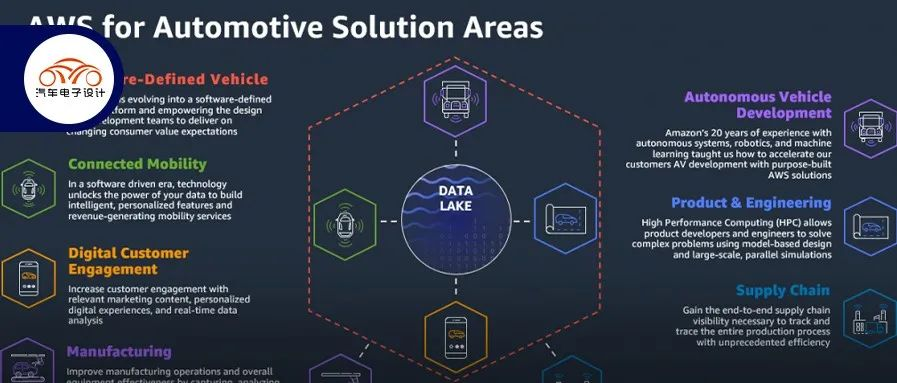SDV: Hyundai’s Ambitious Plan to Revolutionize the Automotive Industry
Author: Zhu Yulong
On the 12th, Hyundai Motor Group announced its mobile travel development plan, which includes upgrading all of its vehicle models to “software-defined vehicles” (SDVs) by 2025. To achieve this goal, Hyundai will invest KRW 180 trillion (approximately $12.5 billion) to establish a new global software center to accelerate SDV development. The cooperation path is no different from what we see domestically:
-
Developing an interconnected car operating system (ccOS) for the Hyundai Group that will be applied to controllers inside Hyundai Group vehicles. High-performance chips will maximize hardware performance (hardware baking) through computing power.
-
Working with NVIDIA to optimize ccOS for the NVIDIA DRIVE platform. While Hyundai’s third-generation integrated controller may continue to use the original chip selection, large-scale L3, L4, and L5 autonomous driving capabilities are key considerations for Hyundai.
-
Starting in 2025, Hyundai, Genesis, and Kia brands will only sell cars that support OTA, providing improvements in connectivity, convenience, and safety.
-
Hyundai also plans to launch a subscription feature (FoD), allowing consumers to purchase these additional features directly or through a subscription.
This is a clear signal that every car manufacturer is investing in the same way, otherwise you are only doing craftsmanship and manufacturing, which is far from meeting the requirements of the next generation of intelligent cars.
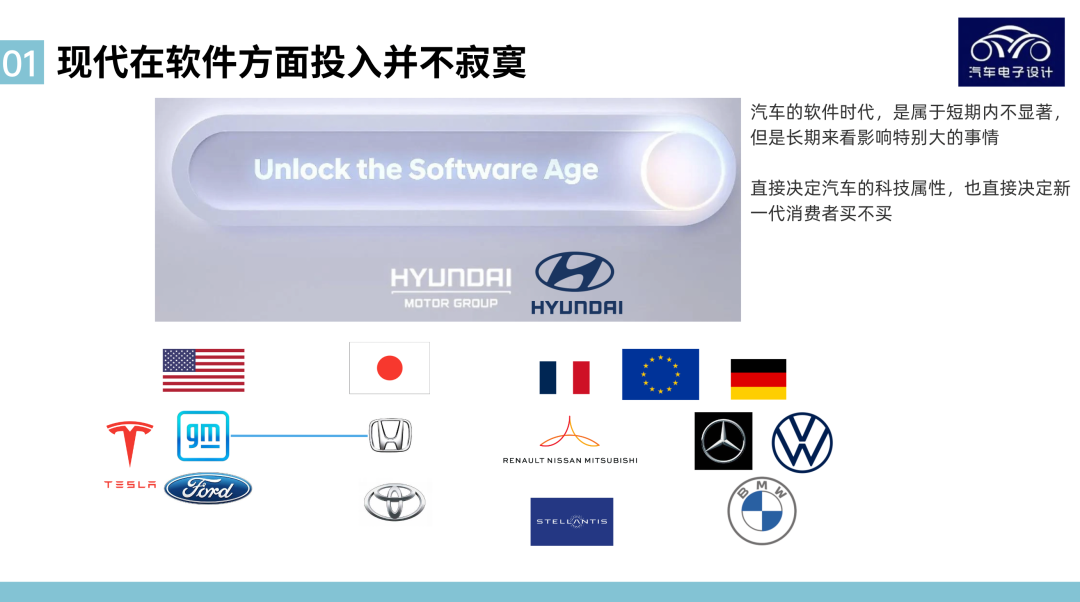
The problem we see is:
-
Automotive companies have all established a large software center. From a fundamental perspective, the idea of software inside the car is definite, and from a means perspective, it can be partially or largely outsourced. However, the entire development leadership is in the hands of this investment-heavy node, the automotive software center.
-
The basis of software is still high-performance processors, high-performance back-end servers, and a complete set of network connection systems. Simply iterating the hardware of the vehicle itself (like vertically cost-optimal, lean design and production to pursue local optimization) is futile.
-
Software development is based on a strategy of selling intelligent vehicles at a reasonable price, iteratively handling mobile data, using a huge and powerful IT server to deploy background support for smart cabins (consumer data) and intelligent driving (overall road environment and data generated by traffic participants), which can also be understood as the five-layer architecture that Hyundai is talking about.

Modern Sense of Crisis
Starting from 2023, new cars from Modern Automobiles will be equipped with Over The Air (OTA) technology, while feature on demand (FoD) will be available in some models like EV9, allowing customers to choose software functions according to their personal needs. In the process of upgrading towards software-defined cars, Internet of Vehicles (IoV) service-connected vehicles will increase from 10 million at the end of this year to 20 million by 2025. Park Chan-Kwan, the President of Modern Automobiles R&D department, said that the group started preparing for promoting software-defined cars several years ago, and will launch cars equipped with relevant technology from next year. Quality software technology will be added on top of hardware technology to expand the application scope of this technology.
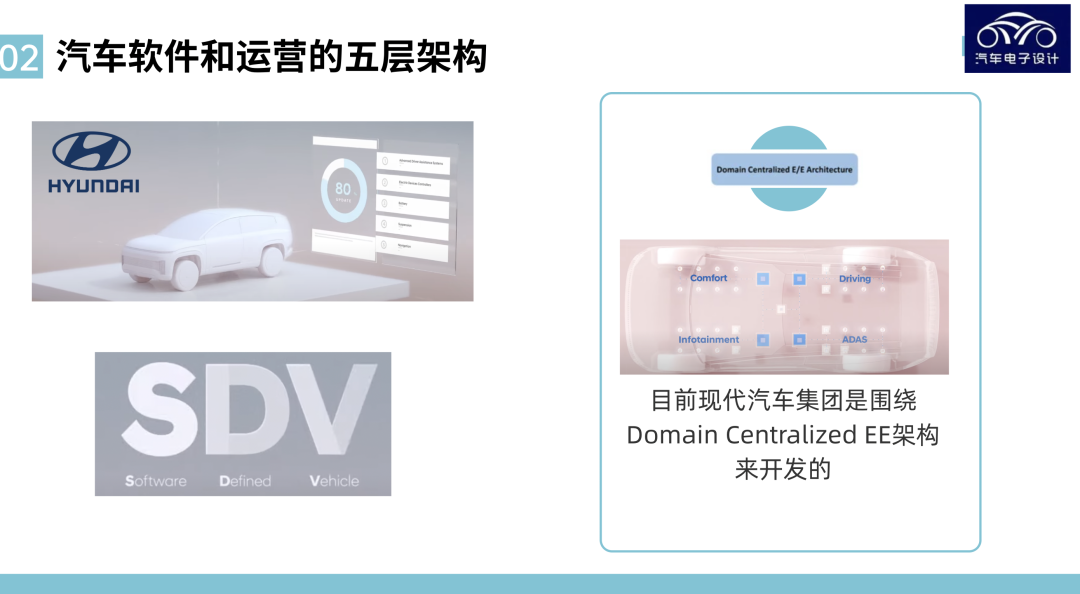
The two new electric platforms, eM and eS, promoted by Modern Automobiles earlier, are set to be released in 2025, based on the existing platform. On one hand, eM will improve the cruising range by 50%, and support OTA updates and L3 level automated driving systems. In other words, the EMP platform we have seen before had no significant impact on the market, despite the shift from 400V to 800V. However, the significant investment in software in EM and ES in 2025 may create a new situation.
eS platform is designed for specialized vehicles with a traditional “skateboard” design, providing modular and customized solutions for enterprises in fields like logistics, carpooling, and last-mile delivery.

Can Car Makers Afford to Burn Software?We can see from this Tesla AI day that the future of the automotive industry, technology companies, and software is all about cross-border competition. We have been waiting for Apple, Amazon, and Google to transform the automotive industry, but as time goes by, we can see that by 2025, the major foreign car companies are mostly cooperating with technology companies, as we can clearly see with Volkswagen.
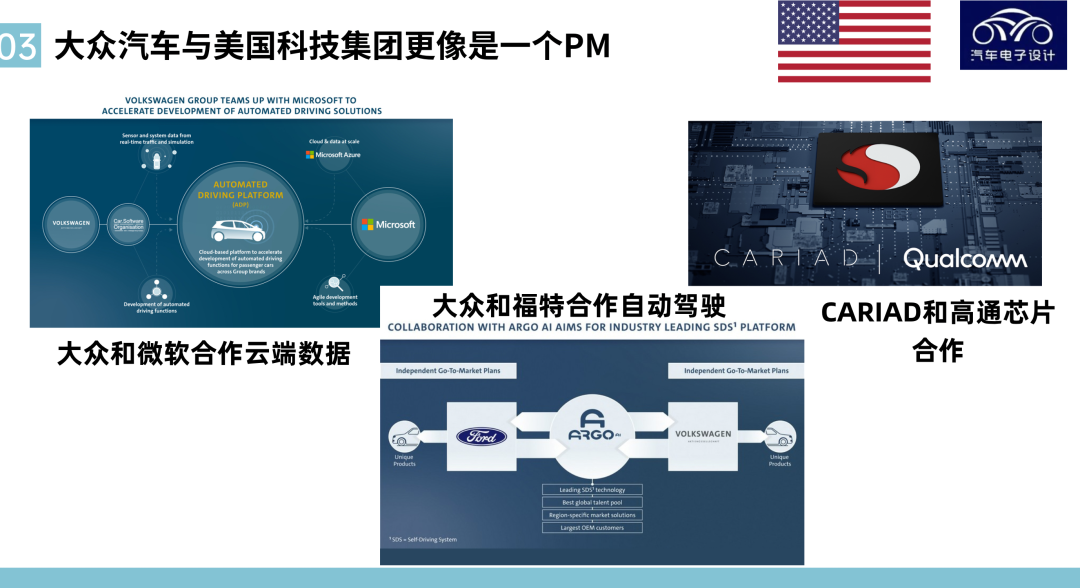
It is impossible for every car company to do everything themselves as Tesla does, from high-performance chip design and customization inside the car, to high-performance GPU computing chips, algorithm systems, and full-stack software development. The main purposes of most car companies establishing software teams are as follows:
-
Evolution of in-car software: From originally outsourcing software to Tier1 to deep involvement in software development, especially for many software in-car domain controllers.
-
In-car core algorithm: Mainly learning algorithms and systems from core chip manufacturers such as Nvidia and then collaborating with other companies to complete software development.
-
Data software backend management: This is similar to the usage of AWS. There is a lot of backend development work involved in handling such massive amounts of data.
It takes time to match and run the entire software development process. I understand why it costs so much money for foreign car companies to establish software centers. On one hand, they need to attract talented personnel, and on the other hand, they need to run the process. Of course, regardless of whether it is effective or not, at least in the long run, chip supply and continuous cooperation are necessary.
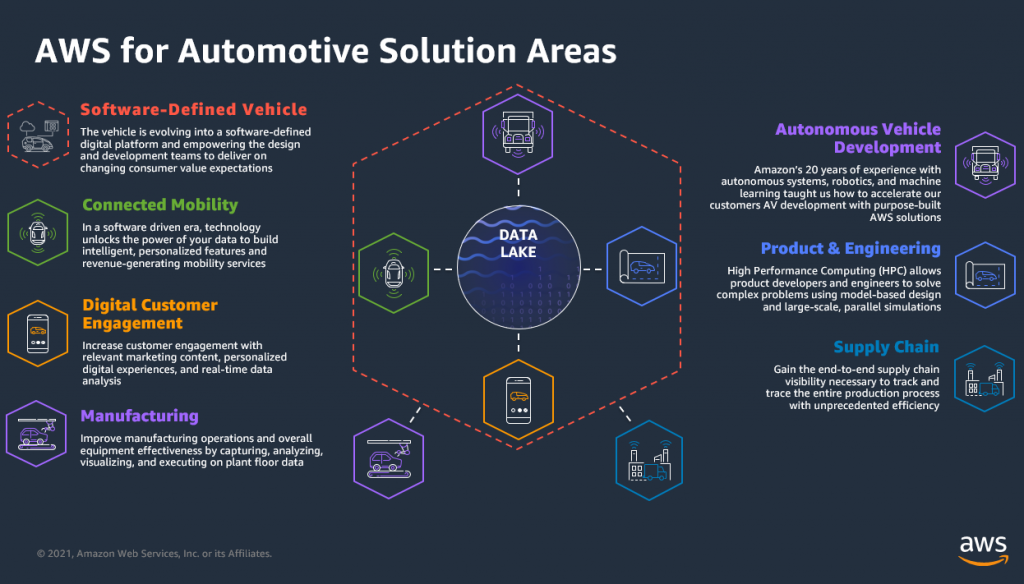
In this field, China is not afraid of being surpassed by others in software. The problem lies in the speed of iteration and the tools for iteration. If a new ecosystem is established, such as Google Map and Apple OS, and this ecosystem is migrated to cars, this stability is also very strong. In the competition in the automotive industry, once all car companies establish a new generation of platforms in 2025 and establish software and content rules in Europe, America, Southeast Asia, and Japan and South Korea, what is the timing for China’s intelligent automotive output?Summary: Currently, high computing power chips and data operation will be our bottleneck. This is very clear, and on this basis, everyone is seeking leading technological partners. This forms a convergence ecosystem similar to that of PCs and mobile phones. Car companies are striving to make differentiation, but if they cannot achieve it, they will either be acquired or acquire others.
This article is a translation by ChatGPT of a Chinese report from 42HOW. If you have any questions about it, please email bd@42how.com.
